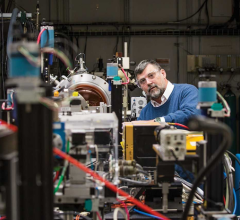
July 17, 2015 - Hospitals in the Midwest were more likely than others to refer patients for guideline-recommended cardiac rehabilitation following angioplasty, according to new original research. This is possibly because more rehab programs are available in the region.
The research and an accompanying editorial were published in the Journal of the American College of Cardiology (JACC).
Of the 1.4 million patients studied based on data from the American College of Cardiology's NCDR CathPCI Registry between July 2009 and March 2012, 76 percent from the Midwest were referred to cardiac rehab; this compared with 55 percent in the South, 50 percent in the Northeast and 49 percent in the West. Other institutional characteristics associated with increased referrals were volume of angioplasty procedures, larger hospital size, as well as private and community hospitals.
In an accompanying editorial, Randal J. Thomas, M.D., MS, FACC, of the Cardiovascular Rehabilitation Program at the Mayo Clinic, wrote that other studies have shown interventions like the use of automatic cardiac rehabilitation referral orders, and the availability of a staff member to help patients through the referral and enrollment process, have improved referral rates. Thomas also suggested the reason for higher referral rates in the Midwest may be because of a greater concentration of local rehabilitation centers than in other parts of the country.
"The study by Aragam and colleagues is a call to action," Thomas said. He added that new models of delivery are needed to improve enrollment and completion of cardiac rehabilitation, since existing programs only have the capacity to enroll less than 50 percent of eligible patients.
"In the past, prior to when Centers for Medicare & Medicaid Services granted reimbursement for these services, it was understandable that physicians did not always refer patients to cardiac rehab following angioplasty. Today, there is no excuse," said Valentin Fuster, M.D., Ph.D., editor-in-chief of JACC. "In order to ensure the best outcome for our patients, this gap in referrals needs to be closed."
The study noted variation in referral rates, with the bottom quarter of hospitals referring less than 20 percent of eligible patients and the top quarter referring more than 80 percent. On average, about 60 percent of all patients undergoing angioplasty were referred for cardiac rehabilitation. By comparison, prescription rates for preventive medications were significantly higher: 97.5 percent for aspirin and 89.8 percent for statins. Study authors noted physicians may also be more inclined to refer patients presumed likely to participate in, complete and benefit from a rehabilitation program, instead of referring all patients as a component of post-procedure care.
"Since the Centers for Medicare and Medicaid Services have incorporated referral to cardiac rehabilitation after angioplasty as a publicly reported performance measure as of 2014, there is an impetus to assess the determinants of under-referral," said Krishna G. Aragam, M.D., MS, the study's lead author and a clinical and research fellow in the Cardiology Division at Massachusetts General Hospital. "Our study offers new insights on referral patterns, with under-referral likely stemming from institutional factors, although many of these factors remain unidentified."
Previous studies had shown that lack of insurance coverage was a major barrier to referral to rehabilitation programs, but this study did not find a strong connection to insurance. Other patient factors, such as age and the presence of additional medical conditions like hypertension and diabetes, had only modest effects as well. Patients who had had a heart attack prior to the angioplasty were referred to cardiac rehabilitation at a rate of 66 percent, which is higher than referrals for the general population.
"Our findings support the need to identify and assist under-performing institutions in implementation of hospital-level interventions to improve cardiac rehabilitation referral rates, as participation in cardiac rehabilitation is associated with better outcomes for our patients," Aragam said.
For more information: www.acc.org


 February 02, 2023
February 02, 2023 






